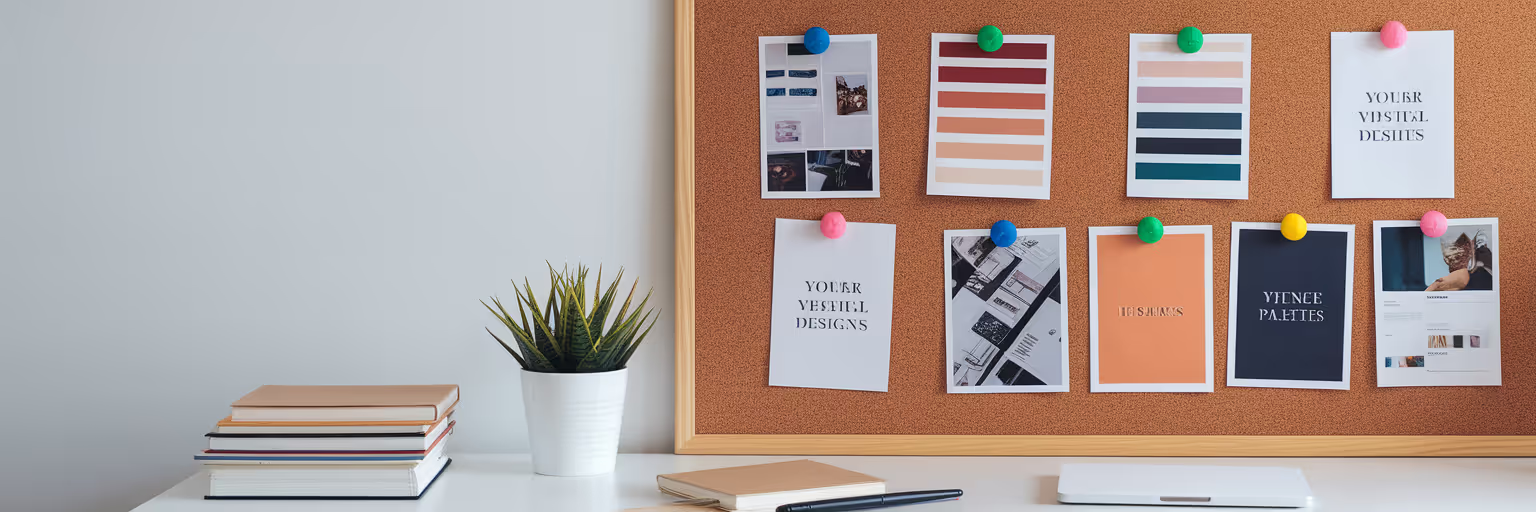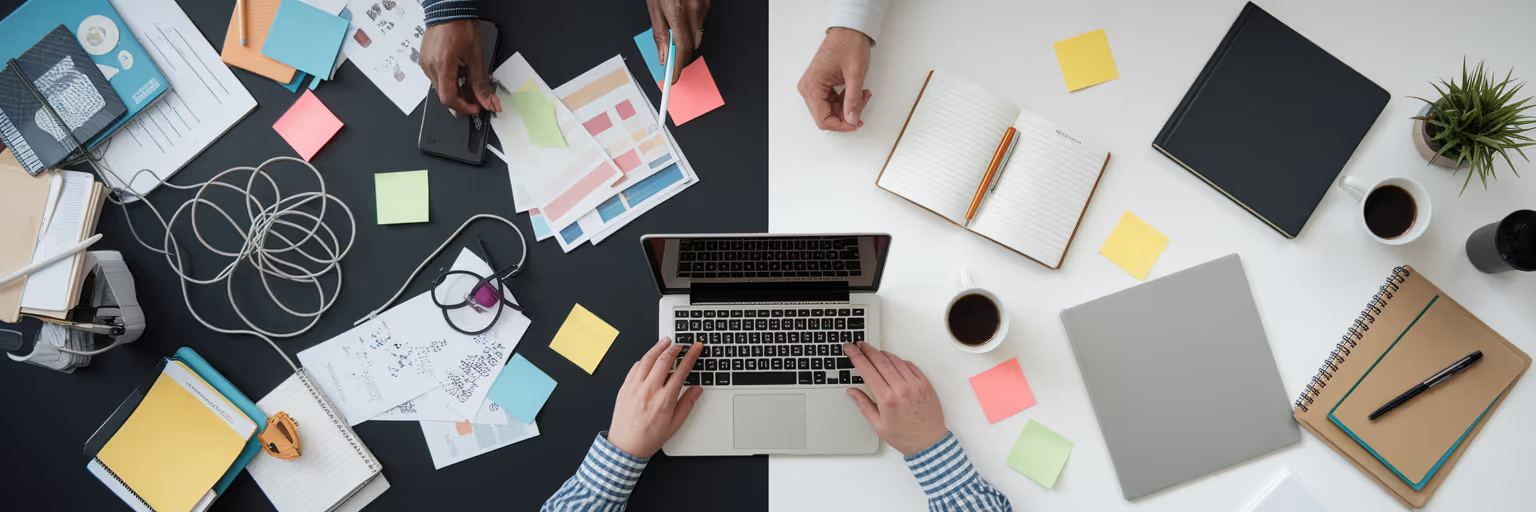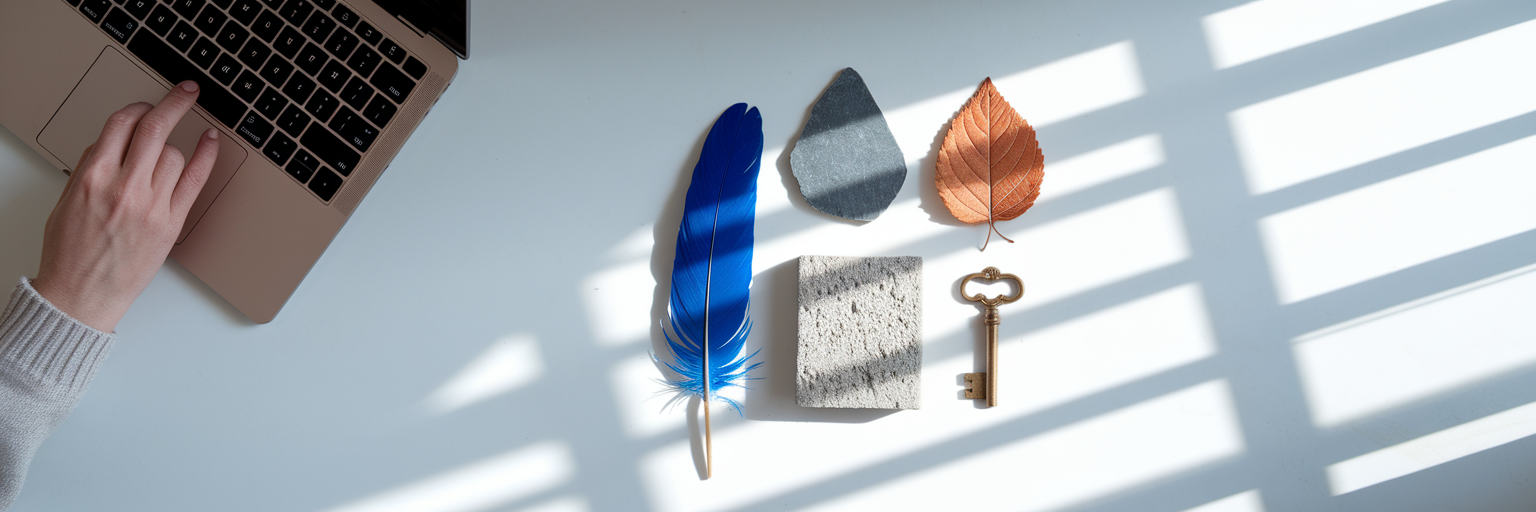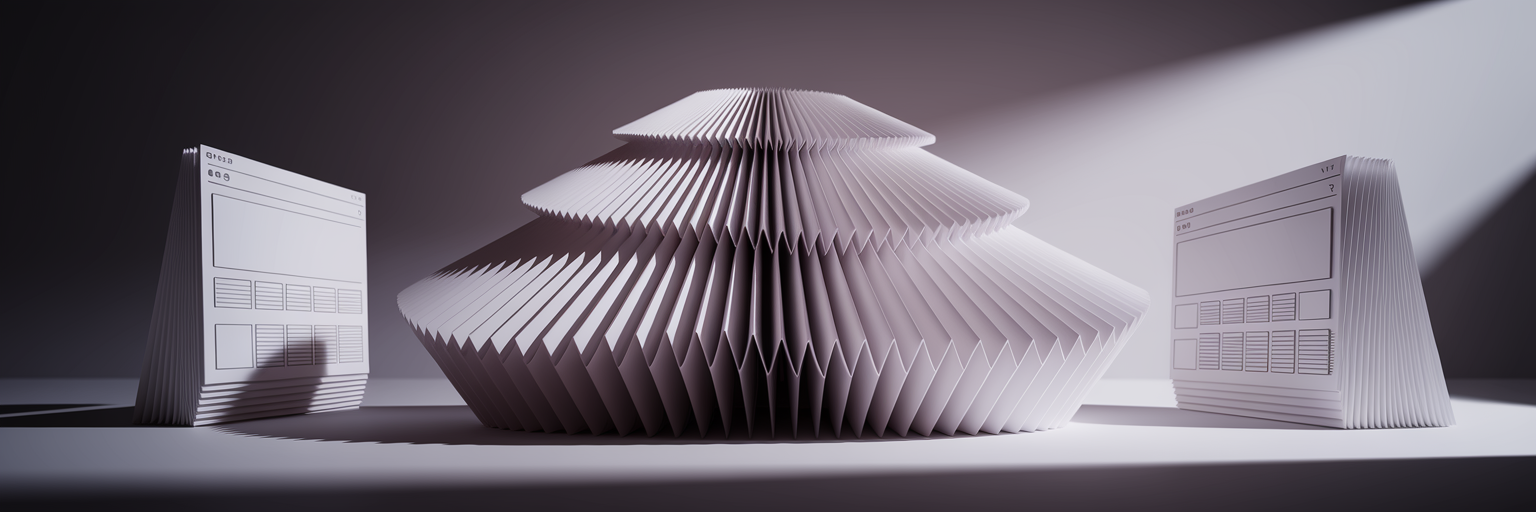Beyond Folders: A New Approach to Creative Order
Every designer knows the feeling. Your digital workspace becomes a minefield of scattered files, your browser groans under the weight of countless tabs, and that perfect inspiration link is lost to the void. We often call this "creative chaos" and accept it as part of the process. But this disorganization silently drains your mental energy, pulling focus away from where it matters most.
The goal here isn’t to force rigid rules that stifle creativity. Instead, it's about introducing intelligent systems that reduce cognitive load. Think of it as clearing the path so your best ideas can move forward without friction. These systems are designed to help you find what you need when you need it, freeing you up to focus on actual problem-solving and innovation. Here are 10 actionable and creative organization tips designed to help you streamline your design workflow, making your daily tasks more efficient and enjoyable.
Tip 1: Perform a Digital Workspace Declutter
A messy computer desktop creates the same mental friction as a cluttered physical desk. Random files and unnamed folders make it difficult to focus and add a layer of subconscious stress to your day. The first step is a simple digital workspace declutter. Create a high-level folder structure to bring immediate order.
Try this simple system:
- Active Projects
- Resource Library
- Archive
This small change minimizes distractions and sets a foundation for better habits. According to a recent industry report, tools for managing digital environments have seen a 35% rise in adoption among creatives, showing a clear trend towards valuing a clean workspace.
Tip 2: Organize Bookmarks Visually, Not Just by Name

Traditional text-based bookmark lists have a major flaw: they force you to remember a link's context from a simple title. For visual thinkers, this is incredibly inefficient. Our brains process images far faster than text, which is why visual bookmarking tools are so effective. Imagine every link you save becomes a visual card on a digital mood board, providing instant recognition.
This approach transforms how you collect and revisit inspiration. Instead of scanning a long list of URLs, you see a gallery of your best ideas, ready to spark your next project. Tools like Bookmarkify are built for this exact purpose, turning browser chaos into a curated, functional library.
Tip 3: Create a Smart Tagging System
Here’s the key difference between folders and tags: a file can only live in one folder, but it can have many tags. This makes your work discoverable from multiple angles. For example, a single logo design file could be tagged with 'logo,' 'client-x,' 'branding,' and 'q3-campaign.' This creates a personal, searchable database that rigid folders can't match.
Start with broad tags like #inspiration, #tool, or #tutorial, then add project-specific ones as you go. This simple habit makes finding assets intuitive.
table { width: 100%; border-collapse: collapse; margin: 20px 0; font-family: sans-serif; }
th, td { border: 1px solid #dddddd; text-align: left; padding: 8px; }
thead { background-color: #f2f2f2; }
Folders vs. Tags: A Comparison for CreativesFactorTraditional FoldersSmart TagsFlexibilityRigid, one location per fileFluid, multiple tags per fileDiscoverabilityRequires knowing the exact pathSearchable from multiple contextsContextLimited to folder nameProvides rich, layered contextWorkflow Example`Projects/Client-X/Logos/Final.ai`File tagged with `#logo`, `#client-x`, `#approved`
Tip 4: Build a Central Hub to Organize Design Resources
We’ve all been there: hunting for a specific font, icon set, or brand guide scattered across Dropbox, Google Drive, and local folders. This frustrating search breaks your creative momentum. The solution is to organize design resources into a single source of truth. This could be a master folder in a cloud service or a dedicated tool.
Having one central hub eliminates wasted time and ensures you and your team are always using the correct assets. This practice is a cornerstone of effective design asset management and brings a sense of calm to complex projects.
Tip 5: Adopt a Clear File Naming Convention

Let’s be honest, we’ve all seen the dreaded file progression: `Design_Final.psd`, `Design_Final_v2.psd`, `Design_Final_v2_use_this.psd`. This confusion is easily avoided with a clear naming convention. Adopt a simple, scalable formula that anyone can understand at a glance.
Try this structure: ProjectName_AssetType_Version_Date.ext. For example: `Odyssey-Website_Homepage-Hero_v3_2025-10-26.fig`. Consistency is everything. A clear naming system makes files self-explanatory, which is helpful for solo work and absolutely essential for team collaboration.
Tip 6: Use Color-Coding to Signal Project Status
Your eyes process color almost instantly, making it a powerful and fast organizational shortcut. Use color-coding in your file system or project management tools to signal status without even reading a file name. This system can be implemented natively in macOS and Windows folder tags or within tools like Asana and Figma.
Here is a simple system to get started:
- Red: Urgent / Needs Review
- Yellow: In Progress
- Green: Approved / Complete
Tip 7: Leverage Multi-View Previews in Your Tools
Multi-view previews allow you to see and edit multiple artboards or component variations at once. This feature, standard in modern tools like Figma, Sketch, and Adobe XD, is a massive time-saver. It helps you maintain visual consistency across different screens and speeds up decision-making by letting you compare variations side-by-side.
As highlighted by Adobe, mastering features like this can reduce design iteration cycles significantly, giving a real productivity boost. For more ways to improve your process, check out other productivity hacks on our blog.
Tip 8: Schedule a Weekly Digital Tidy-Up

Good organization is an ongoing habit, not a one-time event. Just like tidying your home, a little consistent effort prevents a huge mess from building up later. Block out 30 minutes every Friday for a "digital reset." This small ritual reinforces your organizational systems and keeps chaos at bay.
Your weekly checklist can be simple:
- Clear your desktop and downloads folder.
- Archive completed project files.
- Organize new bookmarks and resources from the week.
Tip 9: Build a Reusable Component Library
A component library is a collection of pre-built, reusable elements like buttons, icons, and form fields. Creating one is a powerful way to boost efficiency and enforce brand consistency. Instead of redesigning a button for the tenth time, you just pull it from your library. Even solo designers benefit from this.
Start a simple component file in Figma or Sketch with your most-used elements. It’s a small investment of time that pays off on every future project. For inspiration on what to include, you can explore curated elements on our design page.
Tip 10: Centralize Your Feedback Loop
Is there anything more chaotic than design feedback scattered across emails, Slack messages, and text threads? This fragmentation leads to missed updates and endless confusion. The solution is to create a single, centralized channel for all design feedback.
Use the commenting features built into tools like Figma or a dedicated project management platform. A centralized loop keeps all critiques contextual, version-controlled, and actionable. It ensures every piece of feedback is tied directly to the relevant part of the design, preventing miscommunication for good.
Your Organized Workflow Starts Now
An organized workflow isn't about restriction; it's about creating smart systems that free your mind for what you do best: being creative. You don't have to implement all these tips at once. Start small by adopting just one or two, like visual bookmarking or a clear file naming convention, and you'll see an immediate impact.
Ready to conquer your browser chaos and build a beautiful, functional library of inspiration? Try Bookmarkify for free and see how a more visual approach can transform your creative process.













